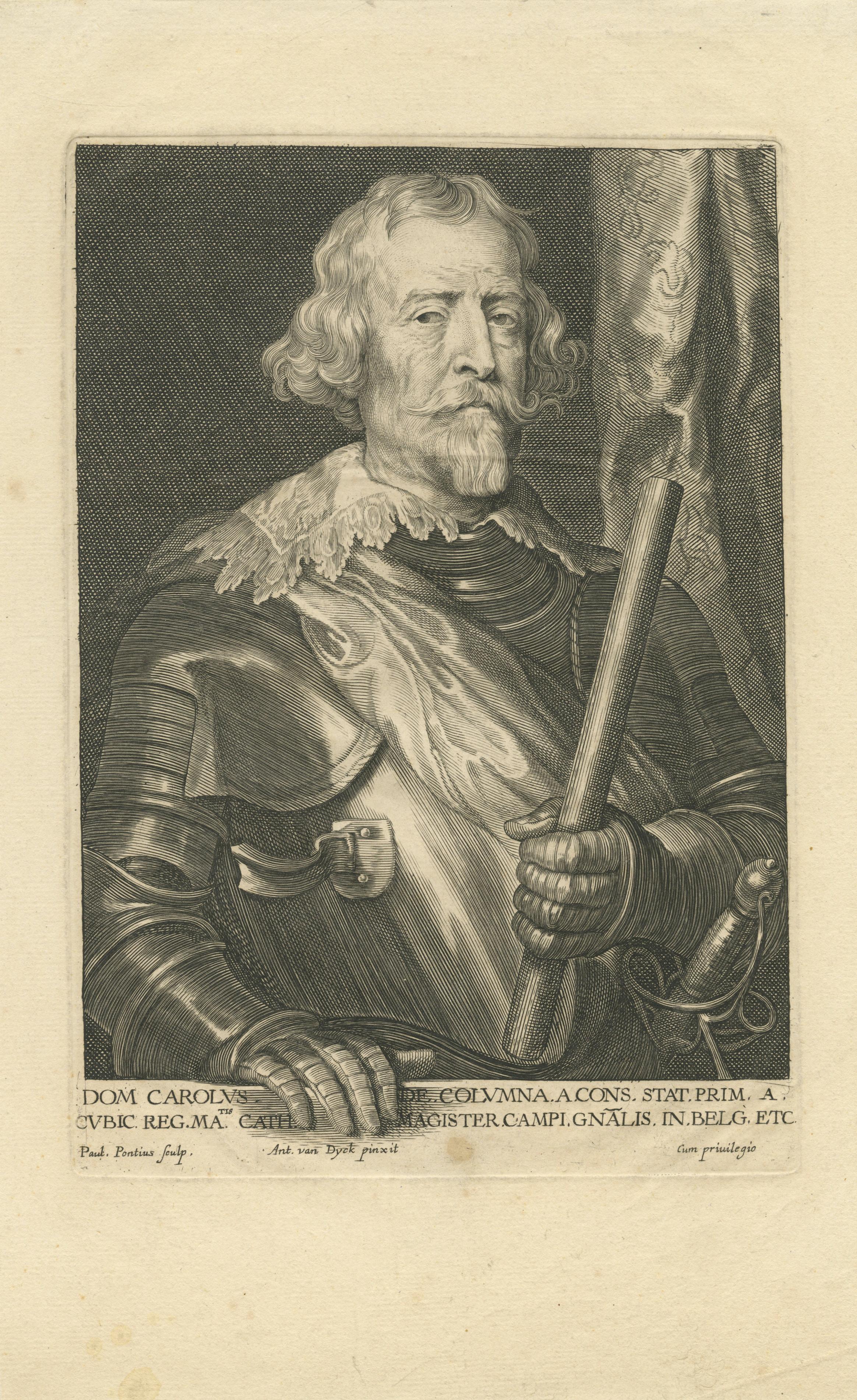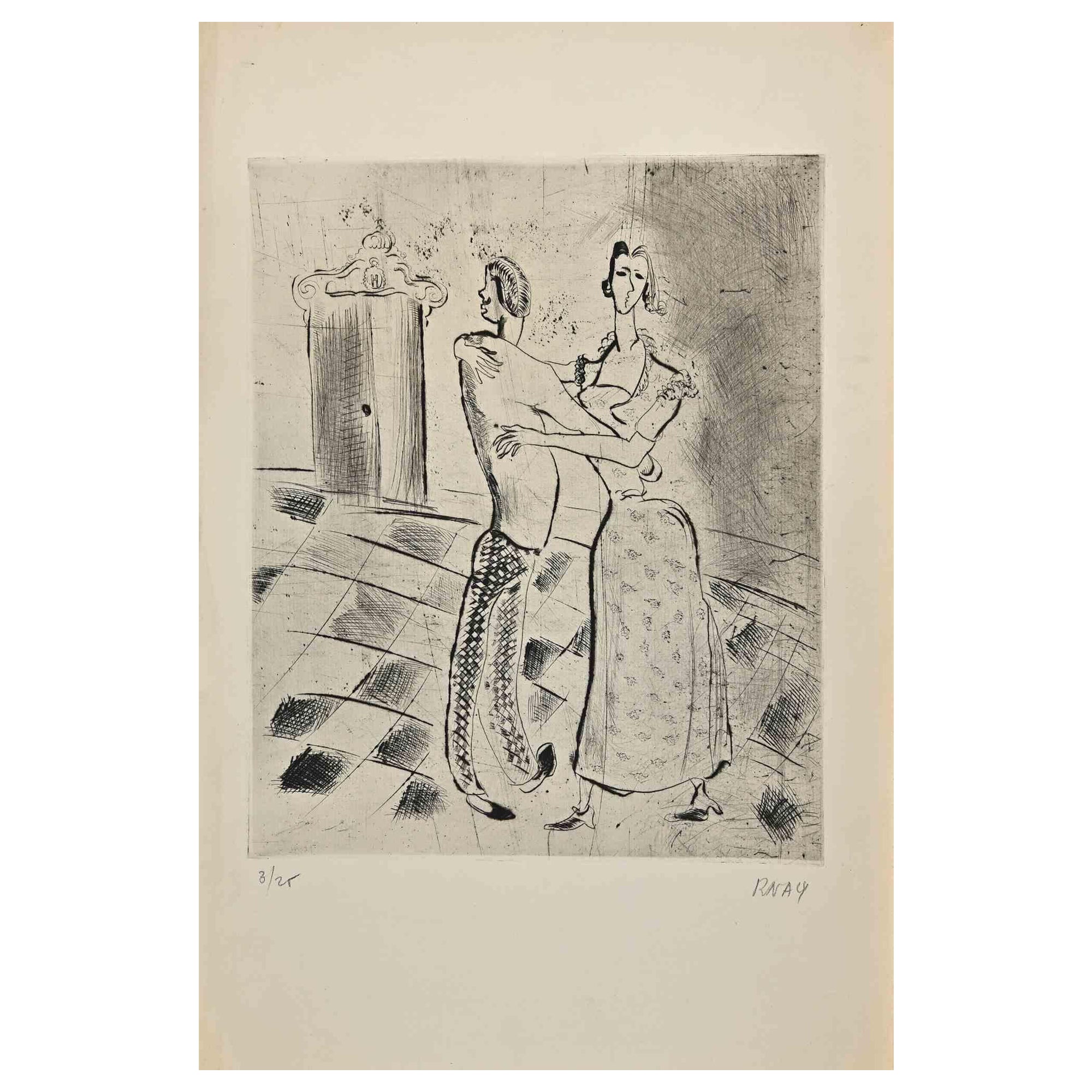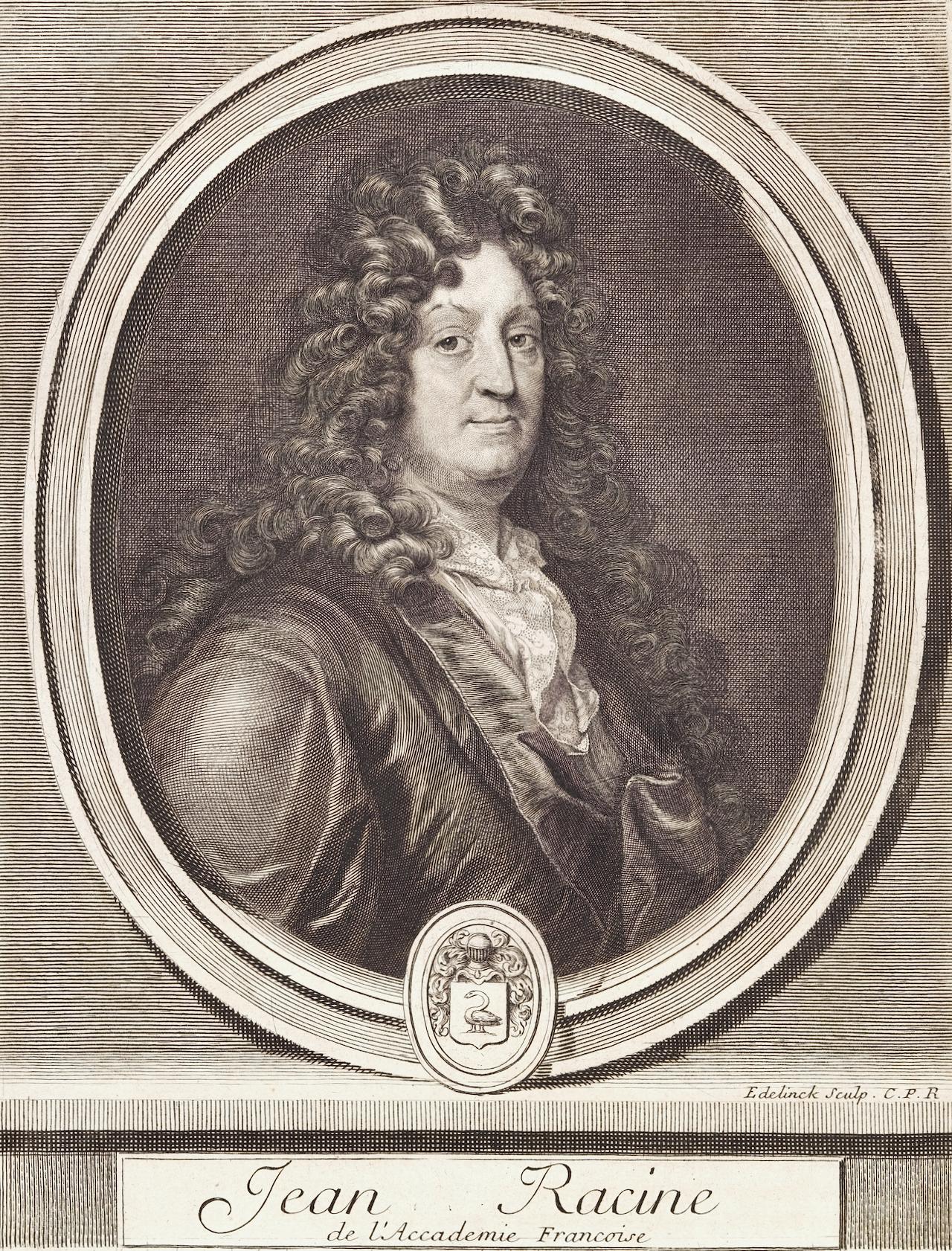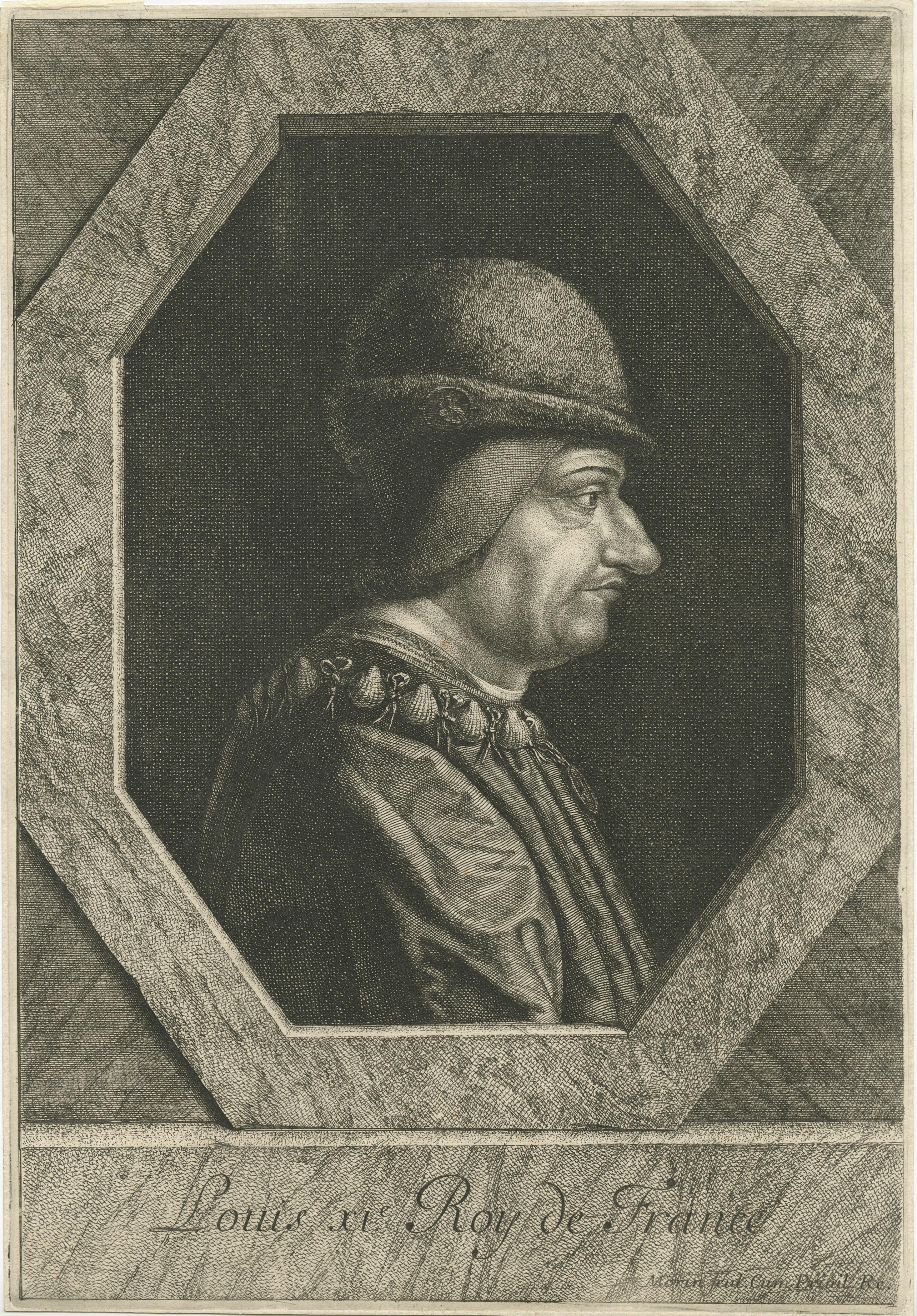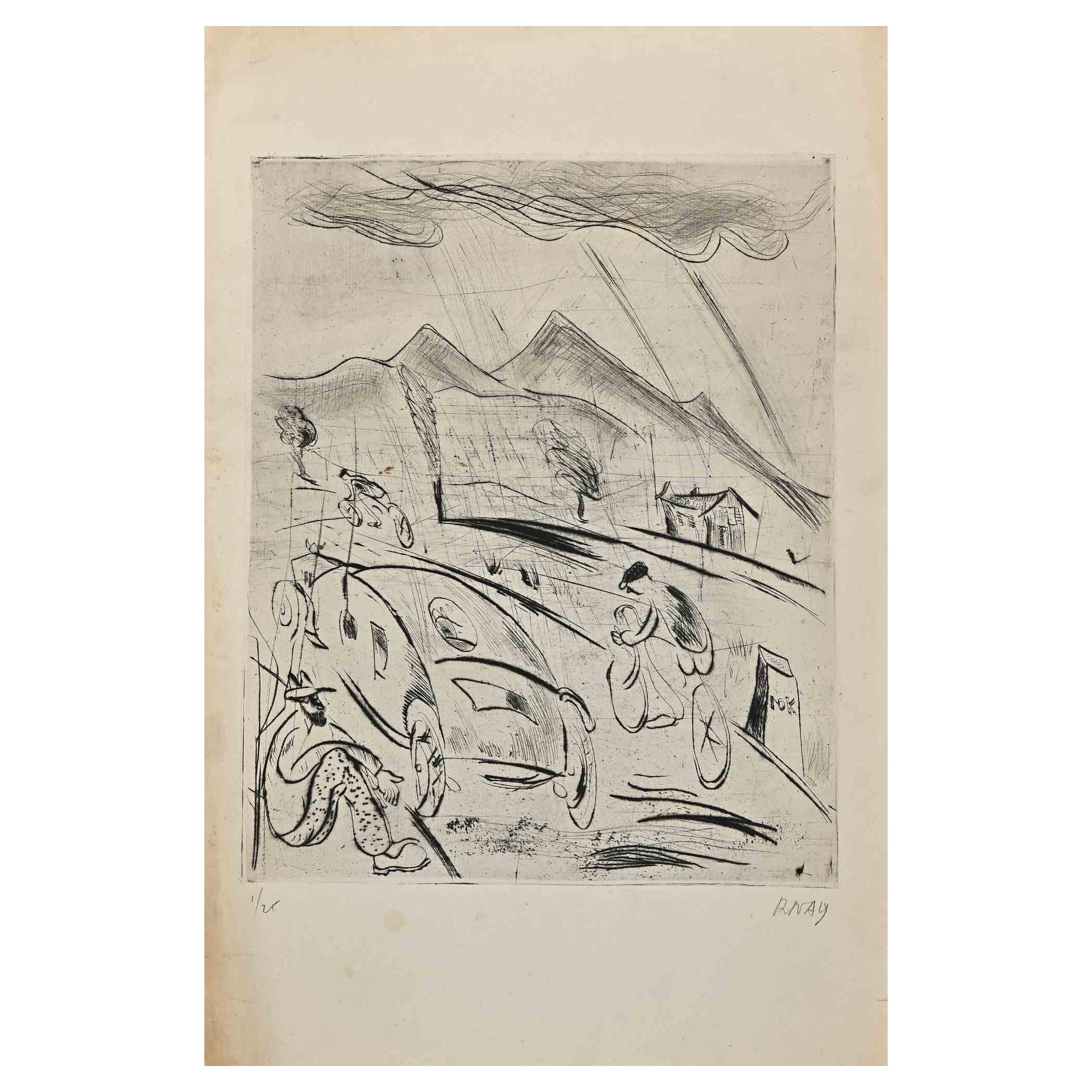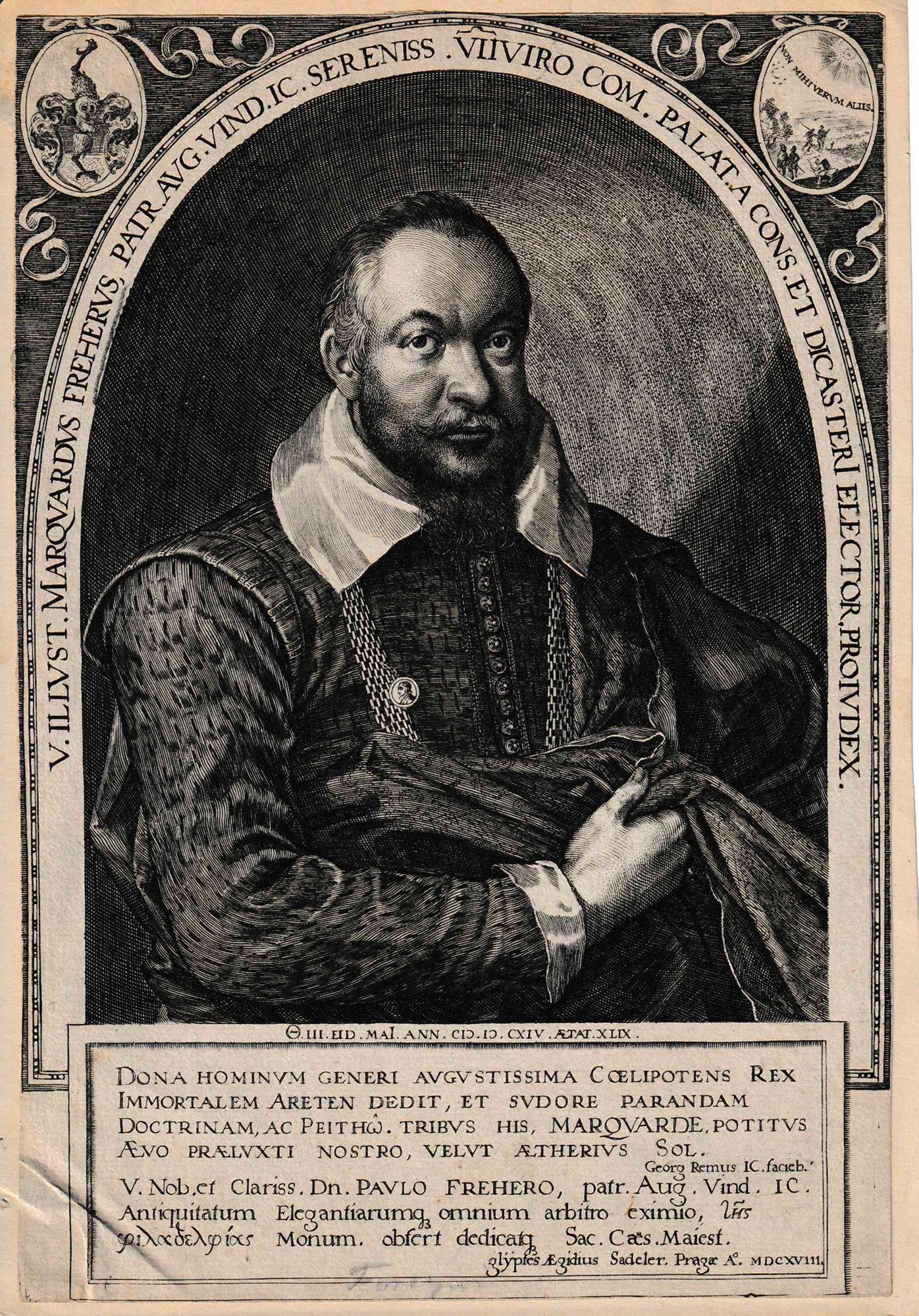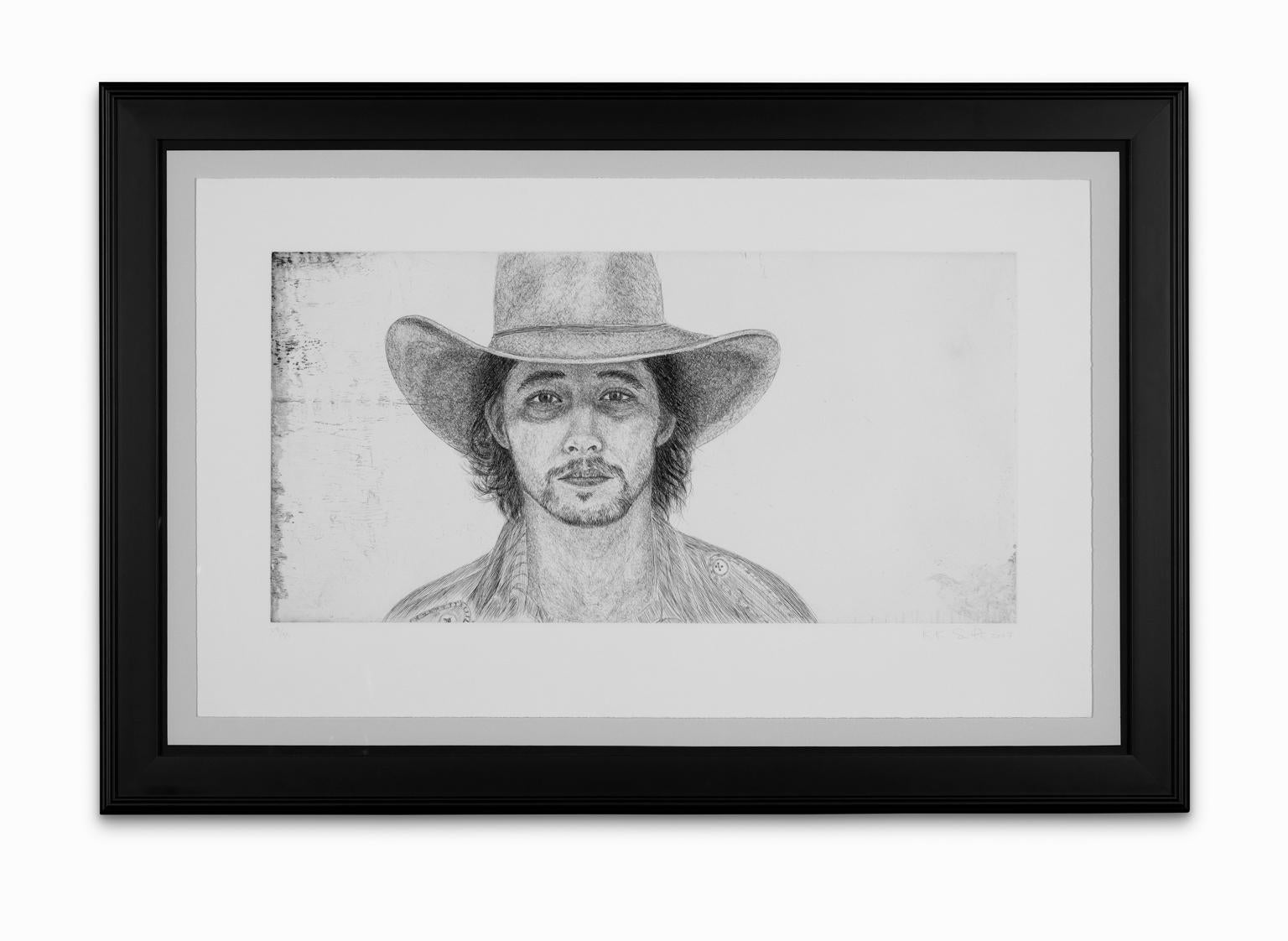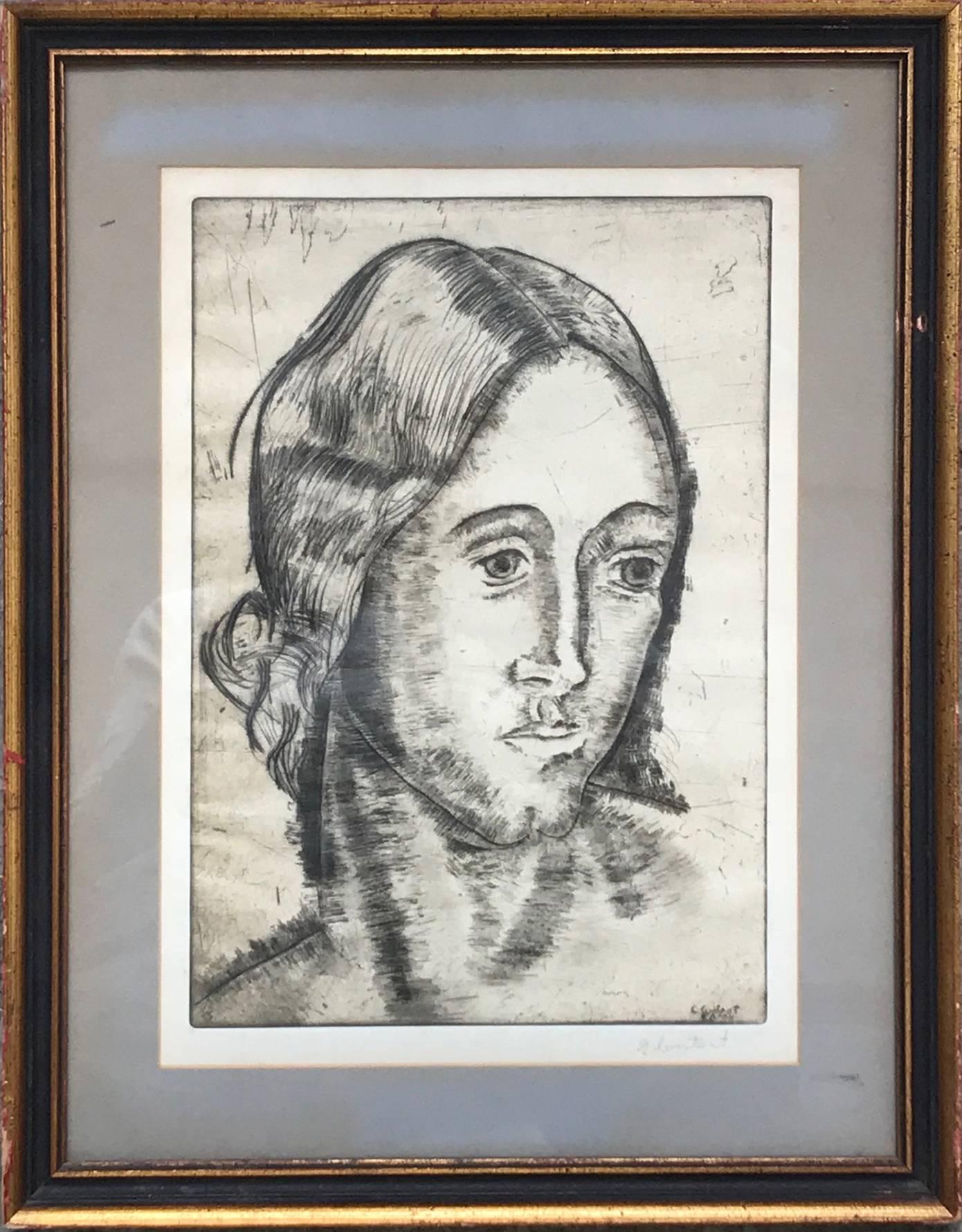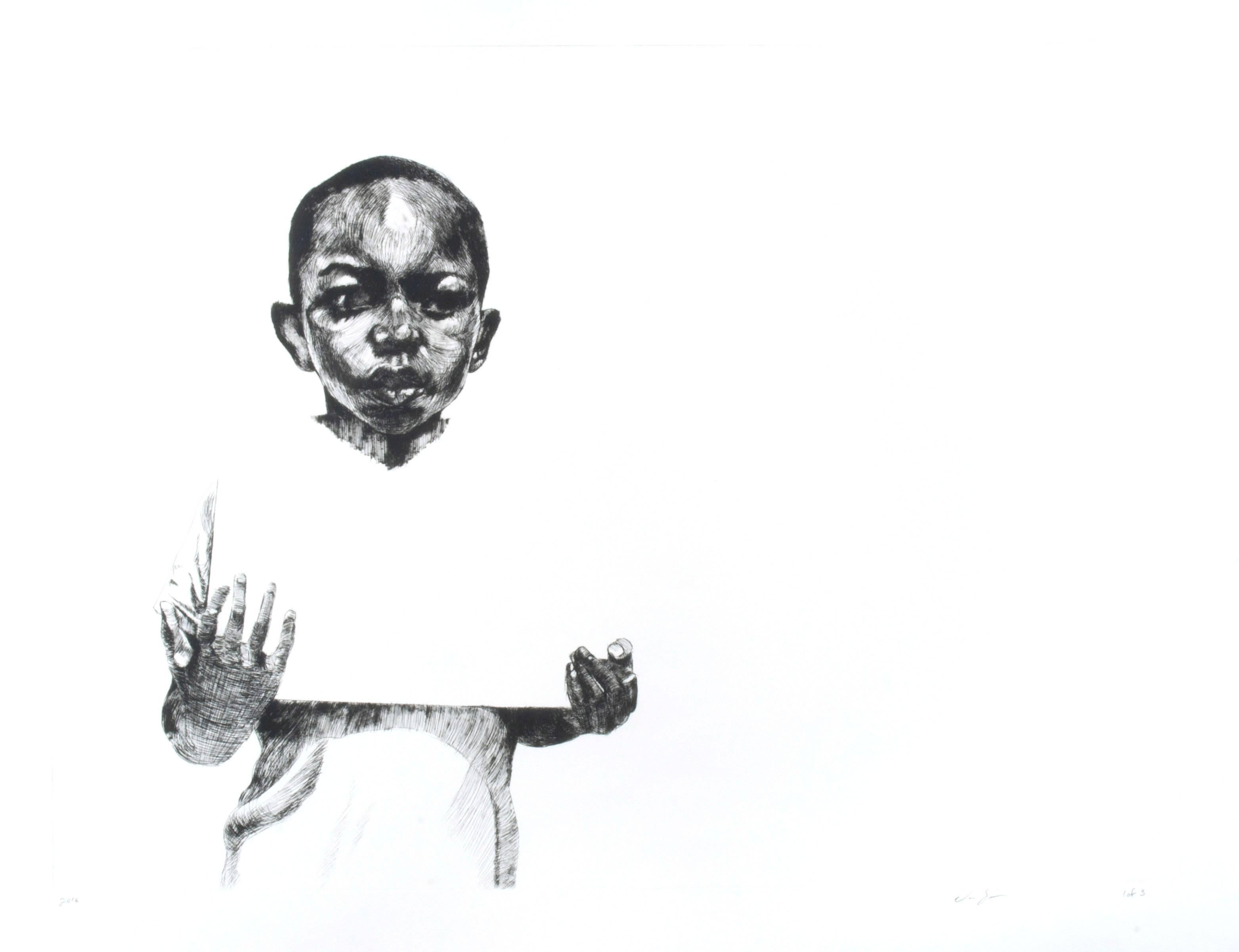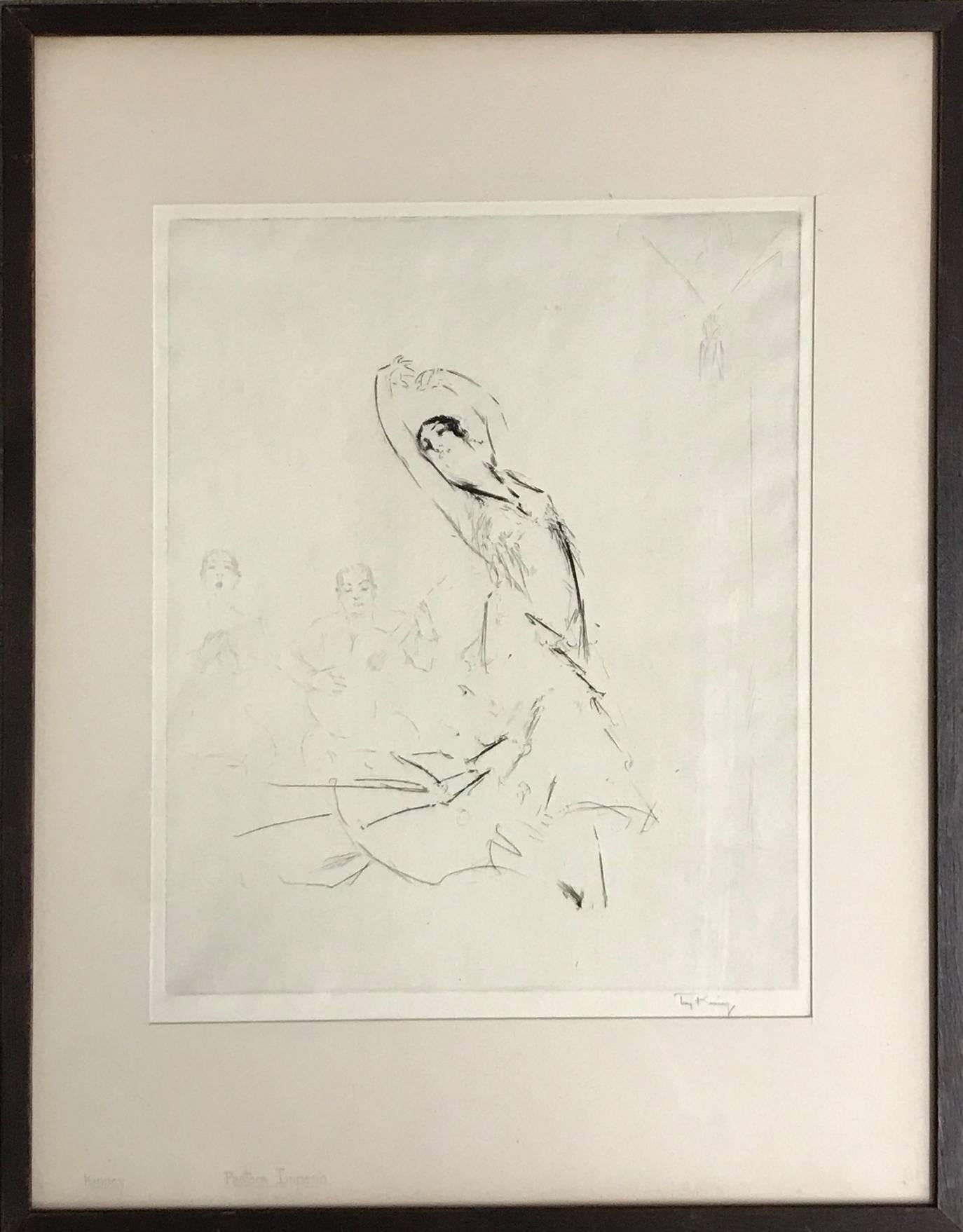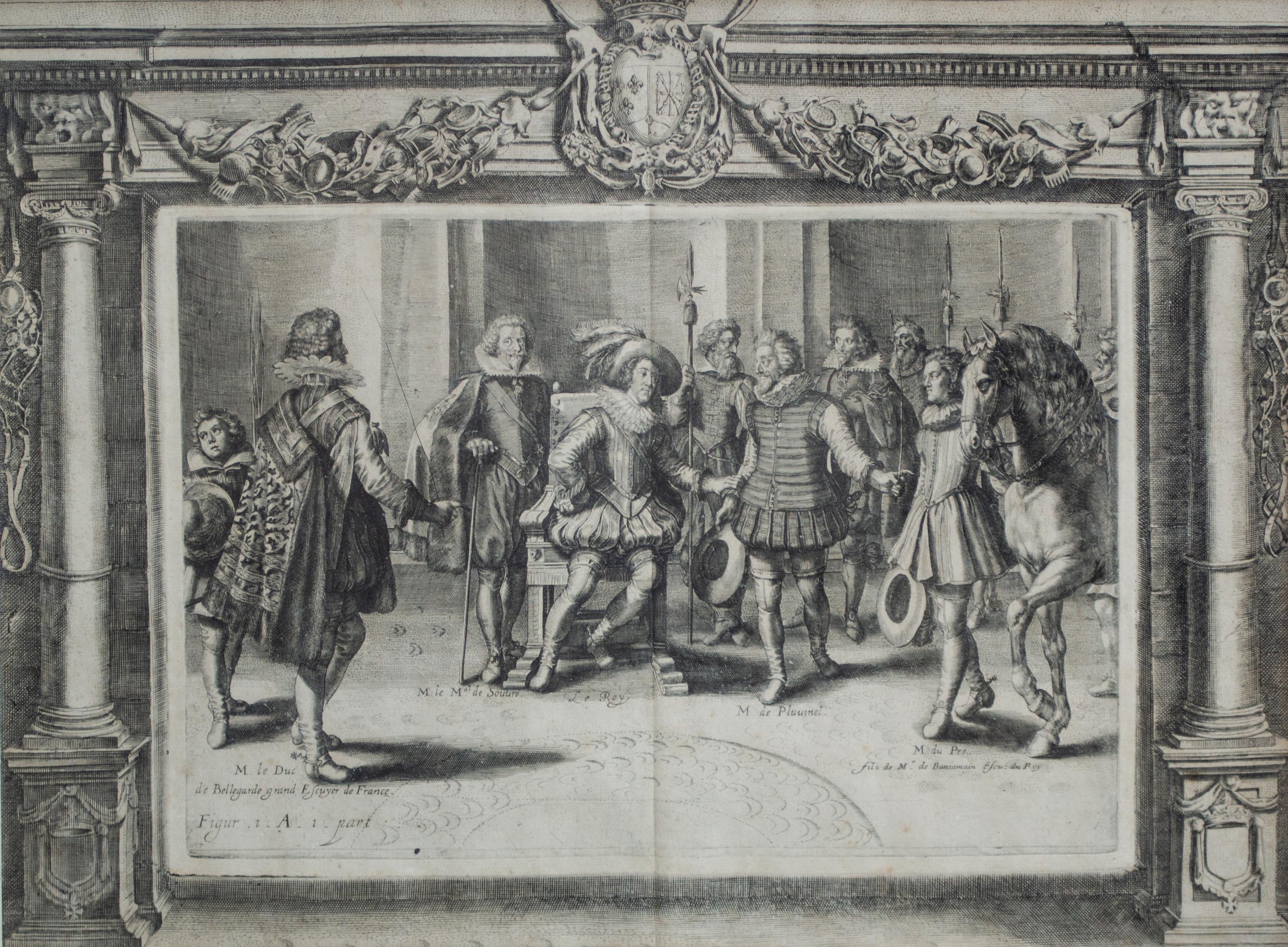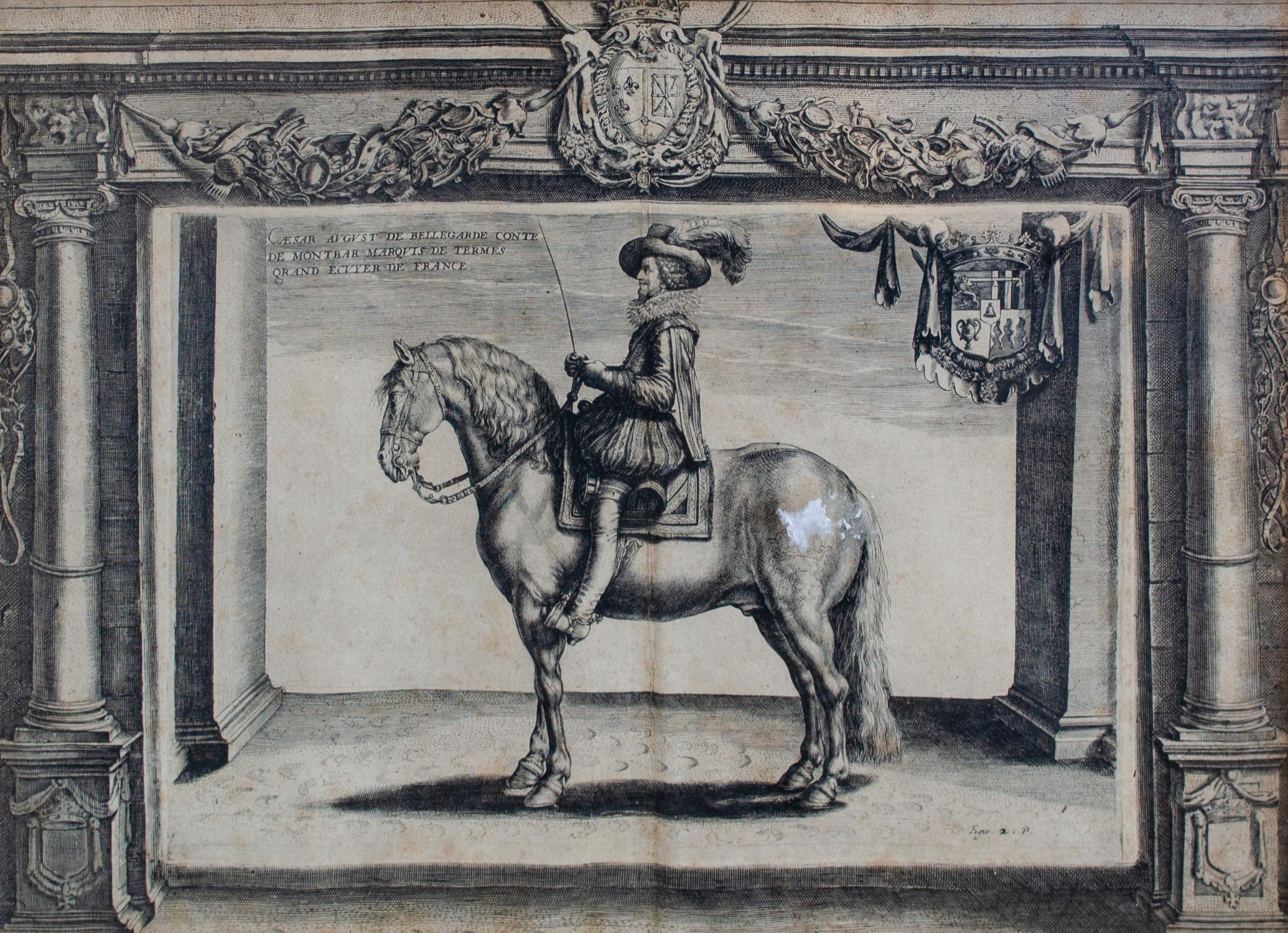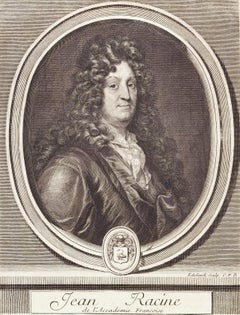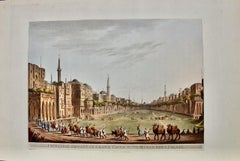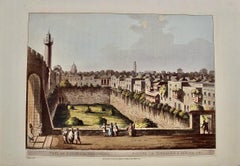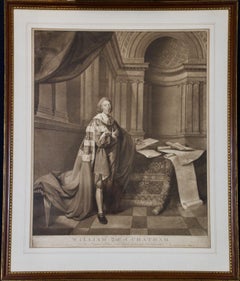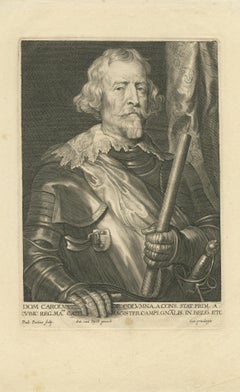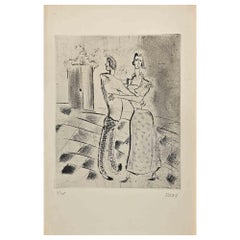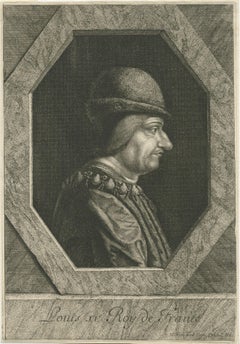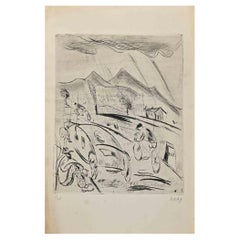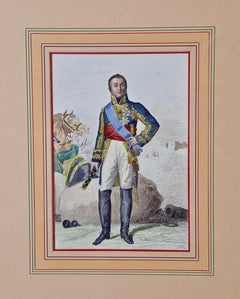
Antique Hand Colored Steel Engraving of the Marshal of the Empire under Napoleon
View Similar Items
Want more images or videos?
Request additional images or videos from the seller
1 of 7
Robert LefevreAntique Hand Colored Steel Engraving of the Marshal of the Empire under Napoleon1835
1835
About the Item
- Creator:Robert Lefevre (1755 - 1830)
- Creation Year:1835
- Dimensions:Height: 15 in (38.1 cm)Width: 12 in (30.48 cm)
- Medium:
- Period:
- Condition:
- Gallery Location:Alamo, CA
- Reference Number:Seller: # 16001stDibs: LU117325565841
About the Seller
5.0
Platinum Seller
Premium sellers with a 4.7+ rating and 24-hour response times
Established in 2011
1stDibs seller since 2019
283 sales on 1stDibs
Typical response time: 2 hours
Authenticity Guarantee
In the unlikely event there’s an issue with an item’s authenticity, contact us within 1 year for a full refund. DetailsMoney-Back Guarantee
If your item is not as described, is damaged in transit, or does not arrive, contact us within 7 days for a full refund. Details24-Hour Cancellation
You have a 24-hour grace period in which to reconsider your purchase, with no questions asked.Vetted Professional Sellers
Our world-class sellers must adhere to strict standards for service and quality, maintaining the integrity of our listings.Price-Match Guarantee
If you find that a seller listed the same item for a lower price elsewhere, we’ll match it.Trusted Global Delivery
Our best-in-class carrier network provides specialized shipping options worldwide, including custom delivery.More From This Seller
View AllJean Racine Portrait: 17th C. Engraving by Edelinck in Perrault's Les Hommes
By Gerard Edelinck
Located in Alamo, CA
This is a 17th century portrait engraving of Jean-Baptiste Racine by Gerard Edelinck (1640-1707), published in Charles Perrault's 'Les Hommes Illustres' in Paris in 1696. Jean Racine (1639-1699) was a French dramatist, one of the three great playwrights of 17th-century France, along with Molière and Corneille. Racine's works were primarily tragedies. He wrote Phèdre, Andromaque, and Athalie. He did write one comedy, Les Plaideurs, and a muted tragedy, Esther for young readers. His writing is renowned for its elegance, purity, speed, and fury. The American poet Robert Lowell described his style as a "diamond-edge" and the "glory of its hard, electric rage". Racine's works often displayed his psychological insight, the passion of his characters, and the stark reality of his plots and stage descriptions. In 1672, he was elected to the Académie Française, and two years later he achieved the title of "treasurer of France", and later the honorary title of an "ordinary gentleman of the king" to King Louis XIV, and subsequently a secretary of the king .
This beautiful engraved portrait is printed on chain-linked, laid paper with wide margins. The sheet measures 17.13" high by 10.75" wide. There is a small spot in the lower margin and a few tiny faint spots in the margins, but the print is otherwise in very good condition. The original descriptive text pages, 81 & 82, are included.
Provenance: This engraving was owned by Arthur Pomeroy, 1st Baron Harberton and the Viscount Harberton (1723-1798). He was an Irish politician, who represented County Kildare in the Irish House...
Category
Late 17th Century Old Masters Portrait Prints
Materials
Engraving
Cairo with Murad Bey's Palace: A Hand-colored Aquatint & Engraving by L. Mayer
By Luigi Mayer
Located in Alamo, CA
This is a hand-colored aquatint and engraving entitled "Principal Square in Grand Cairo, with Murad Bey's Palace", published in London by R. Bowyer in 1801. The print was created by ...
Category
Early 19th Century Romantic Portrait Prints
Materials
Engraving, Aquatint
Pool of Bethesda, Jerusalem: A Hand-colored Aquatint & Engraving by L. Mayer
By Luigi Mayer
Located in Alamo, CA
This is a hand-colored aquatint and engraving entitled "Pool of Bethesda, Jerusalem", published in London by R. Bowyer in 1804. The print was created by Thomas Milton (1743-1827) from drawings by Luigi Mayer.
This beautiful, detailed, original engraving is printed on deluxe J. Whatman paper with very wide left and right margins. There is a watermark "1801" indicating the year the paper was made. The sheet measures 11.25" high and 16" wide. There is a small faint spot in the upper margin on the left and a tiny faint spot in the right upper corner and another in the left lower corner. The engraving is otherwise in excellent condition with vibrant colors throughout the image.
"The Pool of Bethesda...
Category
Early 19th Century Romantic Portrait Prints
Materials
Engraving, Aquatint
Portrait of William Pitt, Earl of Chatham: Rare Framed Mezzotint after Brompton
By Edward Fisher
Located in Alamo, CA
This is a large framed very rare hand-colored copperplate mezzotint engraved portrait of William Pitt, the Elder, 1st Earl of Chatham by Edward Fisher, published in London in 1779 after a painting by Richard Brompton. Pitt is depicted attired in a flowing regal appearing cape, standing in an ornate room with his left hand outstretched over a serious of manuscripts and scrolls that are laying on a table or desk to his left. The table is covered by a beautiful oriental carpet. The manuscripts include the Magna Carta, a map of the colonies, including Long Island and Staten Island, and papers entitled "A Plan for the Reconciliation between Great Britain and the Colonies", "A Motion Made in 1775 for the Recall of Troops from Boston", "A Provisional Act for Settling the Troubles in America Offered to the House of Lords in 1775", and "It is doing Nothing to repeal a few Scraps of Paper or Pieces of Parchment called Acts of Parliament. But our Business is to repeal the Ill-Will and the Animosity unfortunately now subsisting between Great Britain and North America". This engraving is held by the British Museum and the British Royal Collection Trust.
This large framed mezzotint engraving is presented in a brown wood frame with gold-colored beaded inner and outer trim, and a cream-colored French mat. The frame measures 31.63" high by 26.63" wide by 0.75" deep. There are three short tears along the right edge and mild creasing in the left upper, left lower and right lower corners. It is otherwise in very good condition.
William Pitt (1708-1778) was a member of the British parliament from 1735 to 1761 and prime minister from 1766 to 1768. Pitt was an advocate for the American colonies leading up to the War of Independence. He called for an amiable relationship between Great Britain and the colonies and opposed the Stamp Act and military action in America. He advocated for a withdrawal of English troops from Boston in 1775 and the settling of troubles in America, as two of his manuscripts on the table outline. Pitt's colleague, Lord Shelburne (later the Marquess of Lansdowne) shared his sympathies and after Pitt's death, signed a peace treaty with the United States in 1782.
The American city of Pittsburgh, Pennsylvania is named for William Pitt, the Elder. The name originated when the conflict between the British and French over territorial claims in the Northeast were settled in 1758. General John Forbes and his British army, supported by the American colonial troops, expelled the French from Fort Duquesne (which had been constructed by the French in 1754). Forbes re-named the site for William Pitt the Elder, who at the time was a British statesman. The earliest known reference to the new name, Pittsburgh, is in a letter sent from General John Forbes to Pitt, dated November 27, 1758. Pitt's son, William Pitt, the Younger, like his father, also served as British Prime Minister.
Edward Fisher (1730-1785) was born in Ireland in 1730. He was originally a hatter, but learned engraving in London. He became a member of the Incorporated Society of Artists in 1766, and exhibited there fourteen times between 1761 and 1776. He engraved more than sixty portraits. In addition to this portrait of William Pitt, Earl of Chatham, after Richard Brompton he engraved several portraits after Brompton, including George, Earl of Albemarle, as well as engraved portraits after paintings by Joshua Reynolds, including the Shakespearean actor David Garrick, Hugh, Earl of Northumberland, and Elizabeth, Countess of Northumberland and Laurence Sterne, and Hope Nursing Love, as well as Robert Brown, after Mason Chamberlin, Colley Cibber, after Jean-Baptiste van Loo, Christian VII of Denmark, after Nathaniel Dance, Simon, Earl Harcourt, after Hunter, Roger Long, after Benjamin Wilson...
Category
Late 18th Century Old Masters Portrait Prints
Materials
Mezzotint
Waa-Pa-Shaw, Sioux Chief: An Original Hand-colored McKenney & Hall Lithograph
By McKenney & Hall
Located in Alamo, CA
This is an original 19th century hand-colored McKenney and Hall lithograph of a Native American entitled "Waa-Pa-Shaw, Sioux Chief, No. 97", published by Rice, Rutter & Co. in 1865.
...
Category
Mid-19th Century Naturalistic Portrait Prints
Materials
Lithograph
Thayendanegea, Great Captain: Original Hand-colored McKenney & Hall Lithograph
By McKenney & Hall
Located in Alamo, CA
This is an original 19th century hand colored McKenney and Hall lithograph of a Native American entitled "Thayendanegea, Great Captain of the Six Nations, ...
Category
Mid-19th Century Naturalistic Portrait Prints
Materials
Lithograph
You May Also Like
Portrait of Carlos de Colonna, Marques de la Espinar
By Paulus Pontius
Located in Middletown, NY
(after Anthonie Van Dyck) Engraving on cream laid paper, 9 1/4 x 6 3/8 inches (234 x 161 mm), full margins. Water stain throughout bottom, diagonal creases in the area of the bottom right corner, paper tape along top edge on recto. A very well inked impression.
__________Flemish painter and engraver Paulus Pontius was born in Antwerp in 1603, and it was in this city that his full life would unfold. At the young age of 13, he was apprenticed to the still life painter Osias Beert, and subsequently to Lucas Vosterman, who was heavily associated with the workshop of Peter Paul Rubens. Vosterman trained Pontius in the skill of engraving, which he took to immediately, finding he had great skill at recreating paintings. Pontius was able to capture the minutiae of light and shadow found on the canvas, and mastered the ability to accurately render the subtleties of brushwork in this alternate media. His success as an engraver cemented his role in the workshop of Rubens, and in 1624, when Vosterman found himself at odds with Rubens, and left Antwerp for England, Pontius assumed his role as foremost engraver in the workshop. It was in this year that Pontius took up lodgings in Rubens's home, and continued to live there until 1631, when courtship and marriage (the first of three) brought him away. After the death of Rubens in 1640, Pontius embarked on a very successful career engraving reproductions of master works by artists including Rubens, Anthony van Dyck, Jacob Jordaens, Pieter van Avont, Abraham van Diepenbeeck...
Category
Mid-17th Century Old Masters Portrait Prints
Materials
Laid Paper, Engraving
Dancers - Original Etching and Drypoint by Robert Naly - Mid 20th Century
By Robert Naly
Located in Roma, IT
Dancers is an Original Etching and Drypoint realized by Robert Naly (1900-1984)
Good condition on a yellowed paper.
Edition of 3/25.
Hand-signed and numbered on the lower margin.
Category
Mid-20th Century Modern Figurative Prints
Materials
Drypoint, Etching
Louis XI, Roi de France
By Jean Morin
Located in Middletown, NY
Etching, engraving and stippling on cream laid paper with an indiscernible watermark in the sheet center, 11 15/16 x 8 3/16 inches (302 x 207 mm), trimmed at the plate mark. A very g...
Category
Mid-17th Century Old Masters Portrait Prints
Materials
Laid Paper, Engraving, Etching
The Race - Original Etching by Robert Naly - Mid 20th Century
By Robert Naly
Located in Roma, IT
The Race is an Original Etching and Drypoint realized by Robert Naly (1900-1984).
Good condition on a yellowed paper .
Hand-signed by the artist on the lower right corner.
Category
Mid-20th Century Modern Figurative Prints
Materials
Drypoint, Etching
Portrait of Marquard Freher, aged forty-nine
By Aegidius Sadeler
Located in Middletown, NY
Engraving on hand made laid paper, 8 1/2 x 5 7/8 inches (210 x 148 mm), thread margins. An approximately 1-inch vertical repaired tear extends into the image area at the top center ...
Category
Early 17th Century Old Masters Portrait Prints
Materials
Handmade Paper, Laid Paper, Engraving
Kiki Smith "Noon 2007" Engraving Portrait Musician Ryan Bingham
By Kiki Smith
Located in Detroit, MI
" Noon 2007" Portrait of Musician Ryan Bingham engraving by Kiki Smith of a young man looking directly at the viewer. His look is not one of challenge, but more of a questioning nature. It is numbered on verso 28/33, and dated 2007.
Kiki Smith (1954 - ) is a West German-born American artist. Her work encompasses many themes: sex, birth, regeneration and death along with personal investigation of her life and those of her family. Her figurative work of the late 1980s and early 1990s confronted subjects such as AIDS and gender. Her recent works have depicted the human condition in relationship to nature. Smith lives and works in New York City and the Hudson Valley, New York State.
Her father was sculpture artist, Tony Smith and her mother was actress and opera singer Jane Lawrence. Although Kiki's work takes a very different form than that of her parents, early exposure to her father's process of making geometric sculptures allowed her to experience formal craftsmanship firsthand.
Smith was enrolled at Hartford Art School in Connecticut for eighteen months from 1974 to 1975, then moved to New York City in 1976 and joined Collaborative Projects (Colab), an artist collective. The influence of this radical group's use of unconventional materials can be in seen in her work. For a short time in 1984, she studied to be an emergency medical technician and sculpted body parts, and by 1990, she began to craft human figures.
In addition to print making Kiki Smith has created in a number of different mediums such as film, sculpture, tapestries, books and the confines of commissions.
She experimented in a wide range of printmaking processes. Some of her earliest print works were screen-printed dresses, scarves and shirts, often with images of body parts. In association with Colab, Smith printed an array of posters in the early 1980s containing political statements or announcing Colab events. In 1988 she created "All Souls”, a fifteen-foot screen-print work featuring repetitive images of a fetus, an image Smith found in a Japanese anatomy book...
Category
Early 2000s American Modern Portrait Prints
Materials
Engraving
